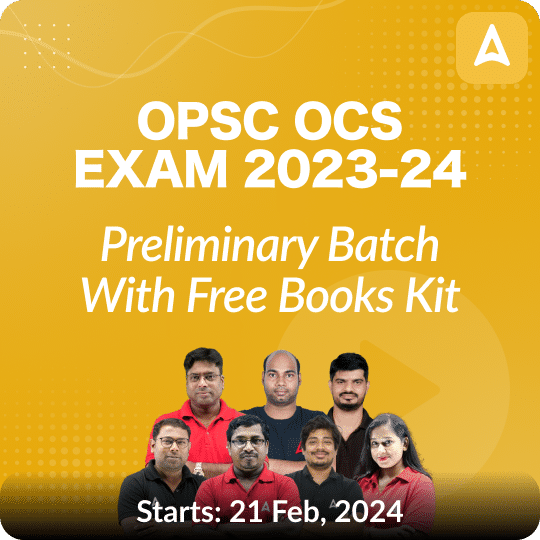The Green Revolution, a pivotal era in agricultural history, brought about a monumental shift in farming practices worldwide. Its impact resonates across various sectors, including livestock management, forestry, and forest guard (FG) roles. To excel in positions such as Livestock Inspector, Forester, or FG under the Odisha Subordinate Staff Selection Commission (OSSSC), a comprehensive understanding of the Green Revolution is indispensable. Here, we present a curated selection of 30 multiple-choice questions (MCQs) focusing on key aspects of the Green Revolution, tailored to enhance your knowledge base for OSSSC examinations.
Top 30 Green Revolution MCQs for OSSSC LSI, Forester, FG 9 March 2024
- What is the Green Revolution?
A) A movement to reduce agricultural productivity
B) An initiative to promote traditional farming methods
C) A period of agricultural transformation with increased crop yields
D) A campaign to decrease food security
Answer: C) A period of agricultural transformation with increased crop yields - What was one of the primary causes of the Green Revolution?
A) Decline in agricultural technology
B) Decrease in population growth
C) Rapid growth in world population
D) Expansion of traditional farming methods
Answer: C) Rapid growth in world population - Which agricultural scientist is often referred to as the “father of the Green Revolution” in India?
A) Norman Borlaug
B) MS Swaminathan
C) Gregor Mendel
D) Rachel Carson
Answer: B) MS Swaminathan - What technological advancements played a significant role in the Green Revolution?
A) Use of outdated crop varieties
B) Implementation of traditional irrigation techniques
C) Development of high-yielding crop varieties
D) Decreased reliance on artificial fertilizers
Answer: C) Development of high-yielding crop varieties - Which factor motivated governments to invest in agricultural research and development during the Green Revolution?
A) Promotion of urbanization
B) Reduction of agricultural productivity
C) Concerns about food security
D) Emphasis on traditional farming methods
Answer: C) Concerns about food security - What role did political and economic factors play in the Green Revolution?
A) They hindered agricultural productivity
B) They promoted the use of outdated technologies
C) They motivated governments to increase agricultural productivity
D) They discouraged international collaboration
Answer: C) They motivated governments to increase agricultural productivity - Which organization heavily invested in agricultural research and development during the Green Revolution?
A) World Health Organization (WHO)
B) United Nations Educational, Scientific and Cultural Organization (UNESCO)
C) Food and Agriculture Organization (FAO)
D) International Monetary Fund (IMF)
Answer: C) Food and Agriculture Organization (FAO) - What was one of the significant impacts of the Green Revolution?
A) Decrease in crop yields
B) Increase in food shortages
C) Alleviation of food shortages
D) Expansion of poverty
Answer: C) Alleviation of food shortages - Which country was not particularly affected by the Green Revolution?
A) India
B) Mexico
C) Brazil
D) Philippines
Answer: C) Brazil - What was one of the main characteristics of the Green Revolution?
A) Adoption of traditional farming methods
B) Decrease in agricultural productivity
C) Introduction of low-yielding crop varieties
D) Adoption of new agricultural technologies
Answer: D) Adoption of new agricultural technologies - How did the Green Revolution contribute to global agricultural productivity?
A) By promoting the use of outdated techniques
B) By discouraging investment in research
C) By increasing crop yields through modern methods
D) By limiting the availability of artificial fertilizers
Answer: C) By increasing crop yields through modern methods - What role did philanthropic foundations play in the Green Revolution?
A) They hindered agricultural research and development
B) They discouraged the use of artificial fertilizers
C) They invested in breeding new crop varieties and disseminating knowledge
D) They promoted traditional farming methods
Answer: C) They invested in breeding new crop varieties and disseminating knowledge - Which of the following was not a technological advance associated with the Green Revolution?
A) Development of high-yielding crop varieties
B) Improved irrigation techniques
C) Decreased use of artificial fertilizers
D) Use of pesticides
Answer: C) Decreased use of artificial fertilizers - What was the primary goal of governments during the Green Revolution?
A) Increase in poverty
B) Decrease in food security
C) Reduction in agricultural productivity
D) Increase in agricultural productivity
Answer: D) Increase in agricultural productivity - Which region of the world did not experience the impacts of the Green Revolution?
A) South Asia
B) Latin America
C) Sub-Saharan Africa
D) Southeast Asia
Answer: C) Sub-Saharan Africa - What term best describes the period of agricultural transformation known as the Green Revolution?
A) Decline in agricultural productivity
B) Increase in traditional farming methods
C) Adoption of modern agricultural technologies
D) Expansion of food shortages
Answer: C) Adoption of modern agricultural technologies - When did the Green Revolution begin?
A) 1940s
B) 1950s
C) 1960s
D) 1970s
Answer: C) 1960s - Who is credited with starting the Green Revolution in the 1966-67 period?
A) MS Swaminathan
B) Gregor Mendel
C) Norman Borlaug
D) Rachel Carson
Answer: C) Norman Borlaug - What is the Green Revolution known for?
A) Decreasing agricultural production
B) Incorporating traditional farming techniques
C) Reducing food security
D) Increasing agricultural production with modern techniques
Answer: D) Increasing agricultural production with modern techniques - Which Nobel Prize winner is associated with the initiation of the Green Revolution?
A) MS Swaminathan
B) Gregor Mendel
C) Norman Borlaug
D) Rachel Carson
Answer: C) Norman Borlaug - How long did the Green Revolution last?
A) 10 years
B) 15 years
C) 20 years
D) 11 years
Answer: D) 11 years - What was the primary goal of the Green Revolution?
A) Decreasing crop yields
B) Addressing malnutrition in the developing world
C) Promoting traditional farming methods
D) Reducing agricultural production efficiency
Answer: B) Addressing malnutrition in the developing world - What technology was central to the Green Revolution?
A) Use of traditional seeds
B) Bio-engineered seeds
C) Heavy reliance on rainfall
D) Limited use of irrigation
Answer: B) Bio-engineered seeds - Which agricultural input was crucial for the success of the Green Revolution?
A) Chemical fertilizers
B) Traditional farming techniques
C) No use of fertilizers
D) Organic farming methods
Answer: A) Chemical fertilizers - In which five-year plan was the concept of the Green Revolution formulated?
A) First Five-Year Plan
B) Second Five-Year Plan
C) Third Five-Year Plan
D) Fourth Five-Year Plan
Answer: C) Third Five-Year Plan - What was the duration of the Third Five-Year Plan?
A) 1951-1956
B) 1956-1961
C) 1961-1966
D) 1966-1971
Answer: C) 1961-1966 - What problem did the Green Revolution aim to solve?
A) Increase in agricultural productivity
B) Decrease in population growth
C) Address malnutrition in the developing world
D) Promote traditional farming techniques
Answer: C) Address malnutrition in the developing world - Which of the following was not a component of the Green Revolution?
A) Heavy irrigation
B) Bio-engineered seeds
C) Reduced use of chemical fertilizers
D) Increased crop yields
Answer: C) Reduced use of chemical fertilizers - Who was the primary target audience of the Green Revolution?
A) Urban population
B) Developed countries
C) Small farmers in developing nations
D) Indigenous communities
Answer: C) Small farmers in developing nations - What was the main outcome of the Green Revolution?
A) Decrease in agricultural production
B) Increase in poverty
C) Boost in agricultural production efficiency
D) Reduction in food security
Answer: C) Boost in agricultural production efficiency




